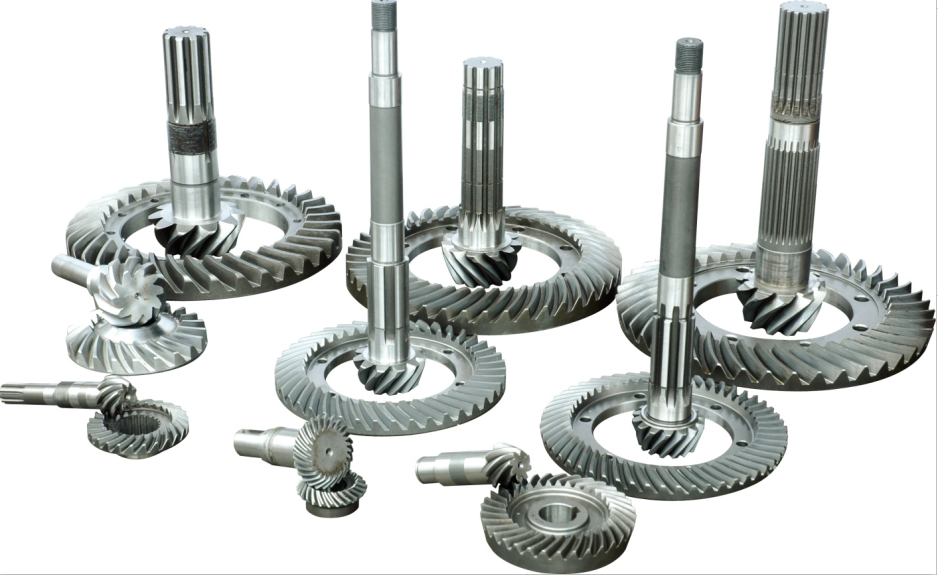
Designing and manufacturing worm gears comes with its own set of challenges. Overcoming these challenges is crucial to ensure the optimal performance, efficiency, and reliability of worm gear systems. Here are some common challenges encountered in the design and manufacturing of worm gears, along with potential solutions:
1. Efficiency and Power Losses:
Worm gear systems typically have lower efficiency compared to other gear types due to sliding friction and gear engagement characteristics. To overcome this challenge:
- Optimize the gear design, including tooth profile, helix angle, and surface finish, to minimize sliding friction.
- Select high-quality materials with suitable hardness and wear resistance to reduce power losses.
- Ensure proper lubrication and cooling to minimize friction and dissipate heat effectively.
2. Backlash Control:
Backlash can affect the accuracy, precision, and smooth operation of worm gear systems. Controlling backlash is essential for improved performance:
- Use backlash control techniques such as preloading mechanisms, anti-backlash devices, or adjustable shimming to minimize or eliminate backlash.
- Optimize gear meshing and tooth engagement to reduce the potential for backlash.
3. Manufacturing Precision:
Achieving the required precision and accuracy in worm gear manufacturing is critical for smooth gear operation and performance. Here are some considerations:
- Utilize high-precision manufacturing processes, such as CNC gear cutting and grinding, to ensure accurate tooth profiles and dimensions.
- Implement stringent quality control measures throughout the manufacturing process, including inspection and testing, to verify gear dimensions and tooth profiles.
- Ensure proper alignment of the worm and worm gear during assembly to avoid misalignment issues.
4. Material Selection:
Selecting suitable materials for worm gears is essential to ensure durability and performance. Consider the following:
- Choose materials with appropriate hardness, wear resistance, and compatibility between the worm and worm gear.
- Consider surface treatments or coatings to enhance wear resistance and reduce friction, such as case hardening, nitriding, or coating with low-friction materials.
5. Lubrication and Cooling:
Proper lubrication and cooling are vital to reduce friction, wear, and heat generation. Address the following:
- Select the right lubricant with suitable viscosity, EP properties, and temperature range for the operating conditions.
- Ensure efficient lubricant delivery to critical areas of gear meshing through oilers or lubrication systems.
- Optimize the cooling provisions to dissipate heat effectively and maintain proper operating temperatures.
6. Noise and Vibration:
Noise and vibration can be a challenge in worm gear systems, impacting performance and user comfort. Consider the following to mitigate these issues:
- Optimize gear design and tooth profiles to reduce noise generation and minimize vibration.
- Employ noise-damping measures such as adding sound-absorbing materials or designing vibration-absorbing structures.
- Address any misalignments or assembly issues that may contribute to noise and vibration.
7. Cost and Manufacturing Efficiency:
Balancing cost considerations and manufacturing efficiency is essential for producing worm gears economically. Consider the following:
- Optimize the design to minimize unnecessary complexity and manufacturing steps.
- Streamline production processes, such as using advanced gear cutting techniques or automation, to improve manufacturing efficiency.
- Conduct cost analysis and explore alternative manufacturing methods, such as precision casting or additive manufacturing, for cost-effective production.
By addressing these challenges and implementing appropriate solutions, designers and manufacturers can overcome obstacles in worm gear design and manufacturing. Collaboration between design engineers, manufacturing experts, and quality control personnel is essential to ensure the successful production of high-quality worm gears that meet the required performance specifications and customer expectations.
